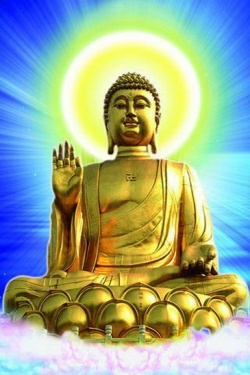Yogacara Buddhism
The Yogacara is one of the two major schools of Indian MAHAYANA BUDDHISM—that is, Buddhist thought that developed in distinction to such earlier schools as THERAVADA.
Its fundamental doctrine is cittamatra, “mind only.”
Because of this, Yogacara is often known as the “mind only” school.
In Yogacara thinking, the world experienced is simply an extension or by-product of mind.
The school’s writers delineated a theory of consciousness that spelled out eight types of consciousness: in addition to the original six found in most early schools (those consciousnesses associated with the six senses, including “mind” as a sense organ), the Yogacara added two more consciousnesses.
These were manas and ALAYA-VIJNANA, the storehouse consciousness.
The school also built upon the MADHYAMIKA idea of two truths to include three “natures” that make up reality:
the parikalpita, or imagined level;
the parantantra, or relative reality; and
the parinispanna, or ultimate reality.
While the other great Mahayana school, MADHYAMIKA, is associated with a thinker about whom little is known—NAGARJUNA—we know quite a bit about the founders of Yogacara.
The school’s founding is attributed to two brothers, ASANGA and VASUBANDHU, who lived in northwest India in the fourth century C.E.
While the older brother, Asanga, had earlier become a monk and tried to interest his younger brother in the Mahayana, Vasubandhu was originally an advocate of the SARVASTIVADA (SARVASTIVADIN) SCHOOL.
During this time he wrote the great ABHIDHARMA-KOSA, a commentary and compilation of basic Sarvastivadin doctrine. Soon after this, however, he joined his brother in advocating a form of Buddhism that emphasized the role of the mind in creating all the reality we experience.
The Yogacara was not simply a philosophical movement.
Its thinkers spelled out a detailed path of cultivation, stated most clearly in Asanga’s Yogacarabhuma-sastra.
Other important Yogacara texts include the Mahasayanasamgraha, the Abhidharmasamuccaya by Asanga, and the Vimsatika and Trimsika by Vasubandhu.
The school’s name indicates an emphasis on the “practice” (cara) of “union” (yoga). Practice centered on the Yogacara school was most influential at such centers as Nalanda.
Yogacara ideas were influential in East Asia and led directly to the establishment of the Faxiang and HOSSO schools in China and Japan, respectively.
